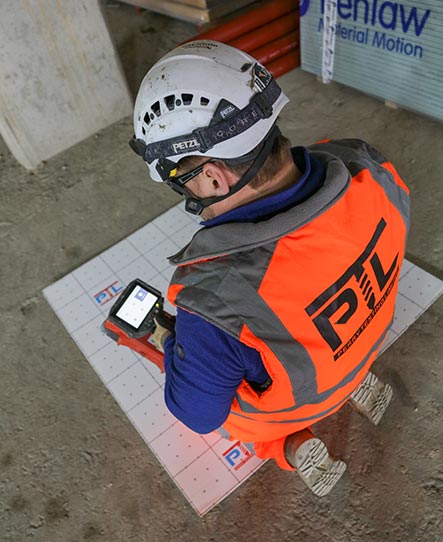Advanced Concrete Scanning Techniques: Guaranteeing Architectural Stability
Advanced Concrete Scanning Techniques: Guaranteeing Architectural Stability
Blog Article
Reveal the Transformative Power of Concrete Scanning in Taking Full Advantage Of Performance and Safety And Security
Concrete scanning has actually arised as a vital device in the building and construction sector, using unrivaled advantages in boosting project efficiency and making sure safety requirements. The transformative power of concrete scanning lies in its capacity to give real-time data and detailed understandings, reinventing exactly how jobs are prepared and performed.
Relevance of Concrete Scanning
Making certain the architectural stability and security of building and construction projects begins with the vital action of conducting extensive concrete scanning. Concrete scanning is a non-destructive method made use of to find and map subsurface aspects within concrete structures.
Additionally, concrete scanning assists in optimizing job timelines and budget by preventing unexpected expenses and delays that might arise due to unforeseen blockages within the concrete. Eventually, investing in comprehensive concrete scanning is a proactive strategy that enhances both effectiveness and safety and security in building jobs.
How Concrete Scanning Functions
Concrete scanning runs as an essential tool in construction projects by employing sophisticated modern technologies to find and map subsurface aspects without causing architectural damages. Ground Permeating Radar (GPR) and Electromagnetic Induction (EMI) are 2 primary techniques made use of in concrete scanning. GPR works by releasing high-frequency radar pulses right into the surface, which get better when they come across subsurface objects or gaps. The moment taken for the signal to return suggests the deepness and location of the items. EMI, on the other hand, uses electromagnetic areas to recognize differences in material make-ups, such as determining rebar or avenues within concrete frameworks.
Throughout the scanning procedure, the information gathered is examined in real-time, enabling immediate identification of potential threats or obstacles below the surface. By utilizing these innovative technologies, concrete scanning significantly reduces the threat of costly damages and injuries on building sites.
Advantages of Concrete Scanning
Using sophisticated scanning innovations in building and construction tasks uses a wide range of advantages, enhancing both performance and security on-site. Among the main benefits of concrete scanning is the capability to identify and situate ingrained items such as rebar, post-tension cables, and conduits properly. By recognizing these aspects before boring or cutting right into concrete structures, the risk of unintended strikes is dramatically reduced, stopping potential injuries to employees and damages to the structure itself. In addition, concrete scanning aids in preparation and developing extra properly, as it gives exact details regarding the area and depth of structural components.

Instance Research Studies: Concrete Scanning Success

In another situation, a construction firm hop over to these guys utilized 3D concrete scanning to analyze the condition of maturing concrete structures in a historic building. The thorough scans supplied useful understandings into the level of deterioration and aided focus on upkeep initiatives effectively. By proactively resolving locations of worry identified via scanning, the business was able to extend have a peek at these guys the lifespan of the structure and ensure resident safety.
These study highlight the transformative power of concrete scanning in improving efficiency, precision, and safety in construction tasks.
Carrying Out Concrete Scanning in Projects
Implementing innovative scanning technologies during building tasks has ended up being significantly crucial for enhancing accuracy and safety and security. By incorporating concrete scanning right into project preparation and execution, construction groups can determine prospective threats, such as rebar or post-tension cords, concealed within concrete structures. This aggressive approach decreases the risk of accidents, delays, and pricey rework, ultimately bring about a lot more effective task timelines and spending plans.
To apply concrete scanning successfully, project managers should collaborate closely with skilled scanning experts to determine the most ideal scanning techniques for the particular project requirements. Engaging scanning specialists from the beginning of a task enables the team to produce detailed scanning plans that deal with crucial areas of concern and make sure comprehensive data collection.
Additionally, incorporating concrete scanning into normal project process can improve decision-making procedures, as real-time check information supplies prompt understandings into the condition of concrete frameworks - Concrete Scanning. This data-driven approach helps web link with informed analytic and enables teams to make modifications immediately, cultivating a culture of performance and security throughout the project lifecycle
Final Thought
Finally, concrete scanning plays a critical role in boosting performance and security in building tasks. By utilizing innovative innovation to spot and map out underlying frameworks within concrete, this procedure assists to stop expensive blunders, make sure structural integrity, and decrease threats on site. With the capability to discover surprise aspects and offer precise information, concrete scanning confirms to be a useful device for maximizing job end results and taking full advantage of overall success.
Concrete scanning is a non-destructive method used to discover and map subsurface elements within concrete structures. Additionally, concrete scanning aids in optimizing project timelines and budget by avoiding unanticipated costs and hold-ups that may occur due to unpredicted blockages within the concrete. One significant instance study entails a massive improvement project where concrete scanning played a vital duty in guaranteeing project success.In another case, a building and construction firm made use of 3D concrete scanning to analyze the condition of aging concrete frameworks in a historic building. By incorporating concrete scanning into task planning and execution, construction groups can identify potential dangers, such as rebar or post-tension cords, concealed within concrete frameworks.
Report this page